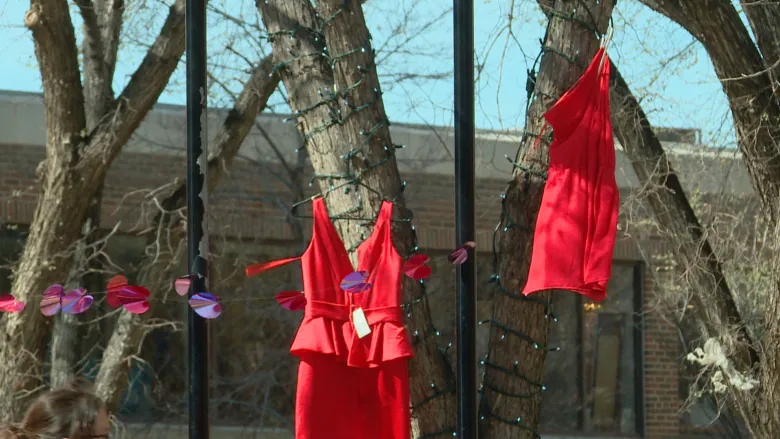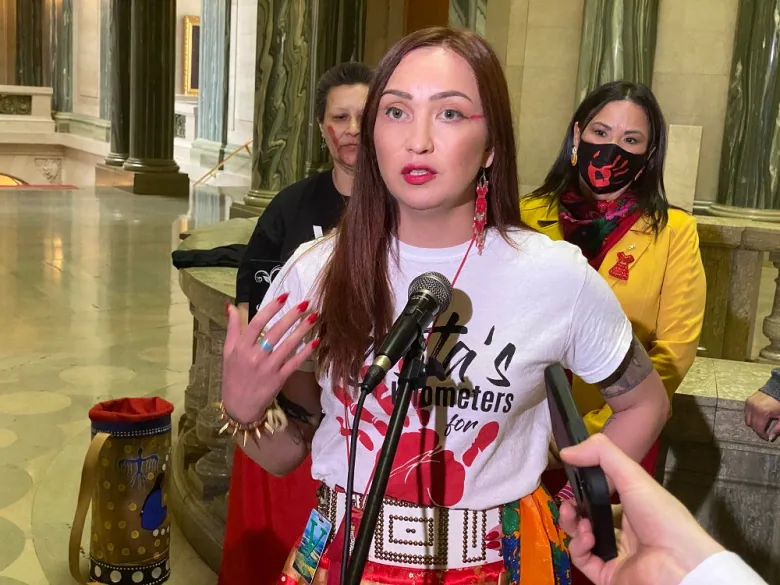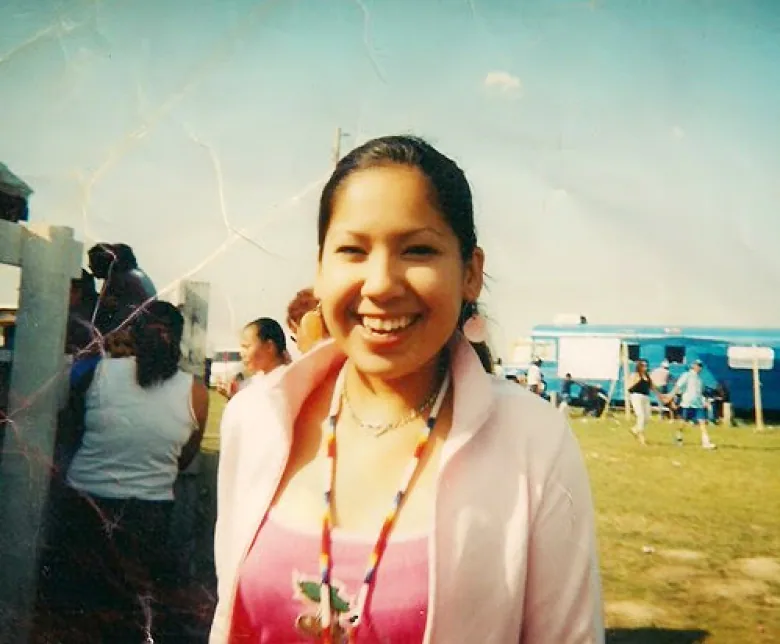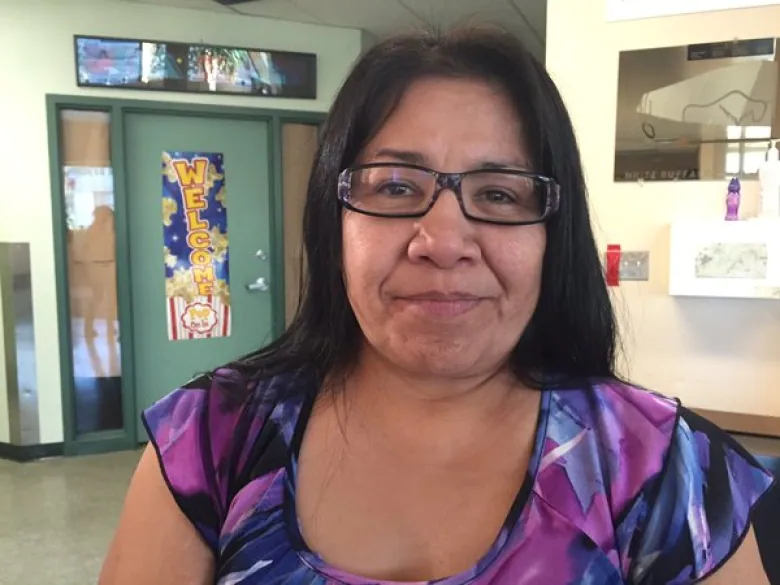Demonstrators in Regina joined communities across Canada on Thursday in honour of the National Day of Awareness for Missing and Murdered Indigenous Women and Girls (MMIWG), also called Red Dress Day.
Betty Nippi-Albright, opposition critic for First Nations and Métis relations and truth and reconciliation, called on the Saskatchewan government to commit to ending systemic racism and violence against Indigenous women, girls and two- spirited individuals.
“Today we mark Red Dress Day, but it’s important to note that for us Indigenous women, every day is Red Dress Day,” Nippi-Albright said. “We Indigenous women endure disproportionate levels of violence that are affected far too often by government’s failure to act. A failure to intervene. A failure to stand up for those who need it most.”
However, she said, it’s important that no one forget the missing.
“Putting faces to the missing persons … it gives all of us a reality check that this isn’t just a number, this isn’t just a number out there, a statistic. This is a human being. This is a person that is … a mother, that is a grandmother, that is a community member,” Nippi-Albright said.
“Society as a whole needs to wake up and acknowledge that when it comes to Indigenous women, we don’t get the attention that non-Indigenous women get when we go missing or when we get murdered, and we need to change that. And it changes by imploring our elected officials to act, not just pay lip-service to the situation.”

Community inaction
Aly Bear, 3rd vice-chief of the Federation of Sovereign Indigenous Nations (FSIN), said there little response in Saskatchewan communities when Indigenous women go missing.
“We have women going missing every day, and it’s not taken seriously,” Bear said. “It’s not in the media, Amber Alerts are not issued. Where is this criteria coming from that we are not allowed to have this awareness because this is hindering any justice for our families.
“This means that when somebody goes missing and an investigation is not done properly, then [a] woman, our child who could have been saved, isn’t just because of that lack of awareness.”

We Indigenous women endure disproportionate levels of violence that are affected far too often by government’s failure to act. A failure to intervene. A failure to stand up for those who need it most.– Betty Nippi-Albright
Bear mentioned that an Amber Alert has yet to be issued for Frank Young, the five-year-old boy who has been missing from the Red Earth Cree First Nation for 17 days.
“They said that it didn’t meet the criteria, but it met three out of the four criteria,” she said, adding it’s possible the boy might have been abducted.
Bear said the violence Indigenous people face stems from white supremacy and genocide.
“So we must implement that 231 calls to justice [in the final report of MMIWG]. And we call upon the province of Saskatchewan and our own First Nations institutions as well, to adopt the First Nations Women’s Declaration so that we can protect our people.”
Premier Scott Moe said his government had been discussing the final report of MMIWG in the lead-up to Red Dress Day.
“What can we do as a government — not just words, but do what we can do? … And when the FSIN would ask us to have a look at this declaration we very quickly looked at the five articles within that declaration,” Moe told reporters.
“And I think there are articles that most certainly this government can support … It’s worthy of a debate in this legislature.”
Mothers of the missing
Loretta Henderson’s daughter Krista Kenny went missing and was killed in 2009.
“She was loved very much,” Kenny said at the gathering. “She was 16 years old. She left her daughter that was almost seven months old. She was still breastfeeding.”
Henderson said her daughter was still going to school and wanted to become a teacher.
“We still struggle today … there needs to be more awareness of missing and murdered women from all over, especially the north. It’s harder for them to get the help that they need.”

Gwenda Yuzicappi is the mother of the late Amber Redman, who disappeared in 2005 after being last seen in a bar in Fort Qu’Appelle.
“I am a mother, a mother who stands before you who went through this pain, this loss. My daughter was only 19 years old when she was taken. It took us two years and 10 months for us to find her remains, and we only found 42 per cent of her remains,” Yuzicappi said, her voice breaking
“I am my daughter’s voice, and I will continue to be her voice.”
Yuzicappi said the “emptiness” of not knowing where a loved one is is something she would not wish on anyone.

Joyce Keepness is the grandmother of Tamra Keepness, who went missing 16 years ago. The girl was five years old when she disappeared, and has not been found.
“Are we ever going to find her? Is she out there? Is she being used for sex-trafficking? Why wasn’t there anything found?” Keepness asked.
Reference-www.cbc.ca